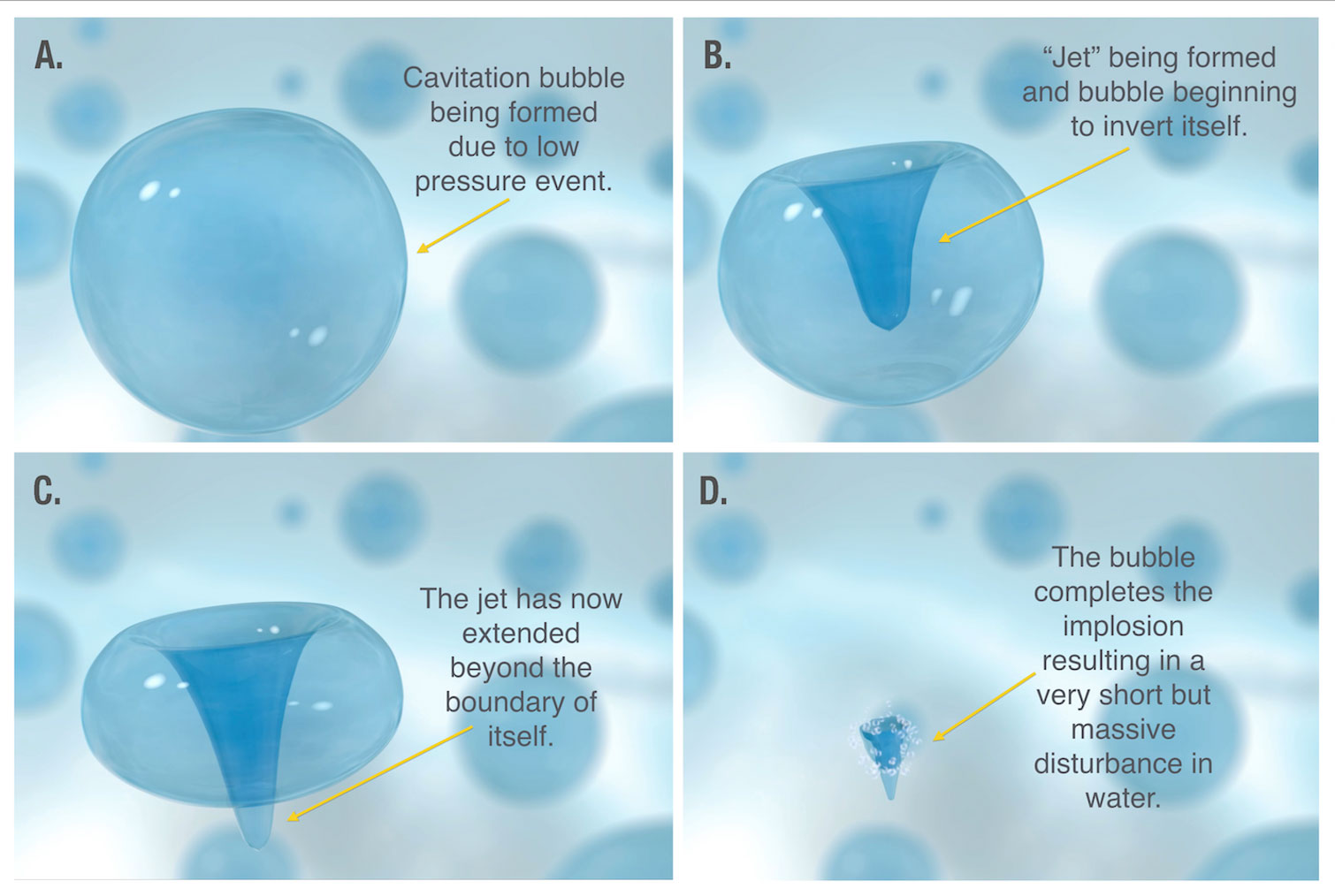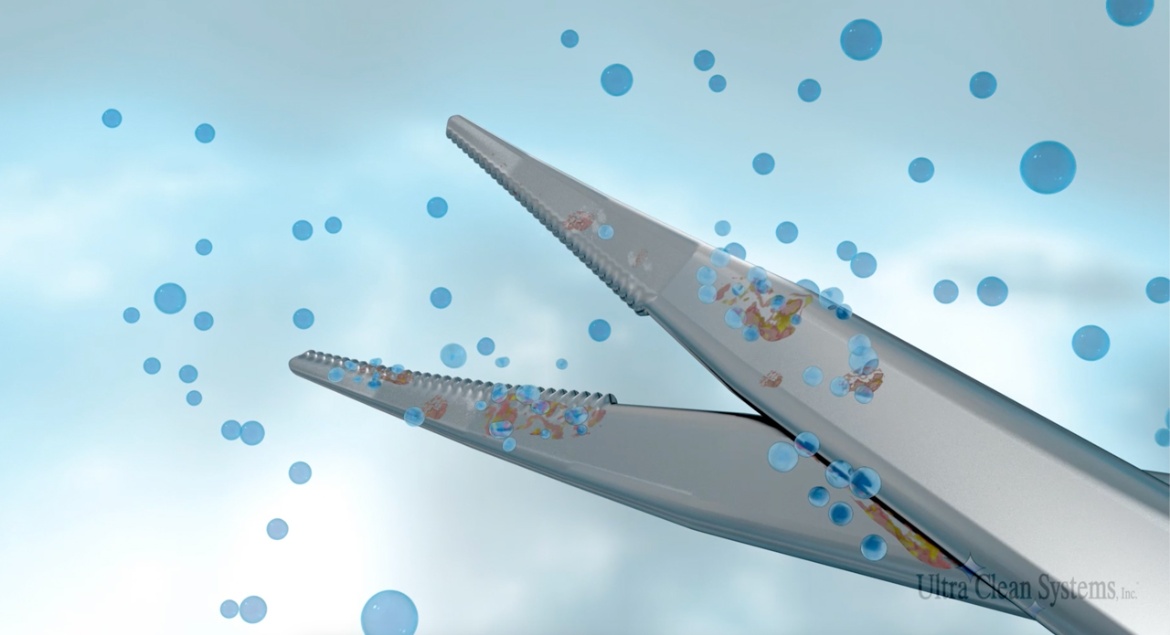What is cavitation?
Ultrasonic surgical instrument cleaners work on the principle of cavitation. So, what is cavitation? In the world of sterile processing, it is the use of sound waves to create bubbles in a mixture of water and a neutral-pH enzymatic detergent.
The neutral pH reduces the surface tension of the water and increases the cavitation. As the bubbles grow, the pressure of the sound waves and the flow of the liquid cause a part of the bubble to invert on itself. This forms what is called a “jet” that protrudes into the bubble. Once the jet grows beyond the opposite side of the bubble, the bubble implodes.

Burst of energy
The implosion sends a short, but massive, burst of energy into the liquid. This creates a vacuum that sucks bioburden from surgical instrument hinges, crevices, and lumens. It also creates a scrubbing motion that lifts the bioburden from the instrument surfaces. The detergent in the water loosens the bioburden, making the scrubbing motion more effective.

A higher frequency creates smaller bubbles. Smaller bubbles can get into smaller crevices, but they create less energy when they burst, and cleaning takes longer. A lower frequency creates larger bubbles. They take less time to clean, but with the extra energy, can cause more damage to delicate instruments.
A good ultrasonic cleaner properly balances the frequency with the power density to get exceptional cleaning action with minimal instrument damage. Most ultrasonic washers for surgical instruments produce sound waves at a frequency of around 40 kHz. Power density generally runs from 70–115 watts/gallon.
Burst of energy
Ultra Clean Systems’ machines are also irrigators. By flushing liquid through lumen and robotic instruments, cavitation occurs inside them, cleaning the interior channels. Bubbles can get into hard-to-reach areas, such as joints to clean the entire instrument. Our machines have been proven to remove 99% of fine particulates in bioburden.
Ultrasonic transducers
So, where do the sound waves come from? A transducer. Your stereo speakers are transducers. A transducer takes power from one system and converts it to another type of power. In the case of ultrasonic transducers, they use electrical energy to produce sound vibrations.
There are two main types of transducers used in ultrasonic surgical instrument cleaners: bonded ceramic and titanium rod transducers (TRT). Bonded ceramic transducers are usually bonded to the outside of the tank, either along the bottom or on the sides, depending on the depth of the chamber. They also can be inserted into a metal case placed in the bottom of the tank. The titanium rod runs through the tank, below or along each side.

We’ll discuss the differences between these two types of transducers at greater length in another post.
Ultrasonic cleaners don’t disinfect or sterilize surgical instruments. Instead, they are used after manual cleaning to complete the cleaning process and remove bioburden from the hard-to-clean areas on nonlumen, and especially lumen and robotic, instruments. Cavitation is what allows an ultrasonic cleaner to reach those spaces.
